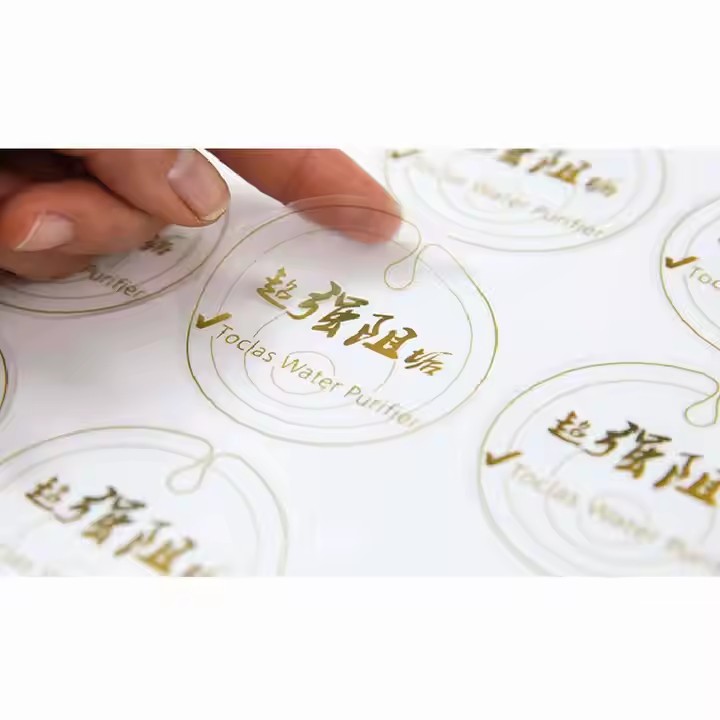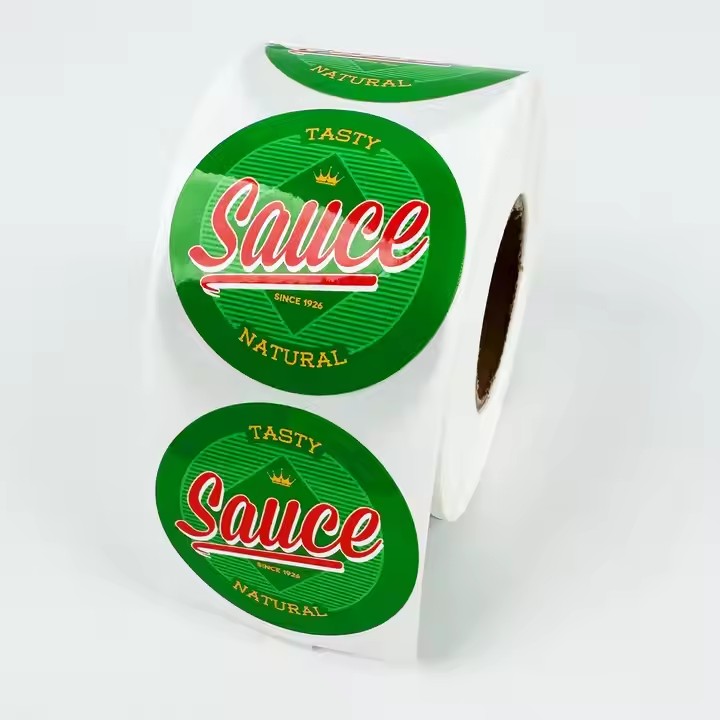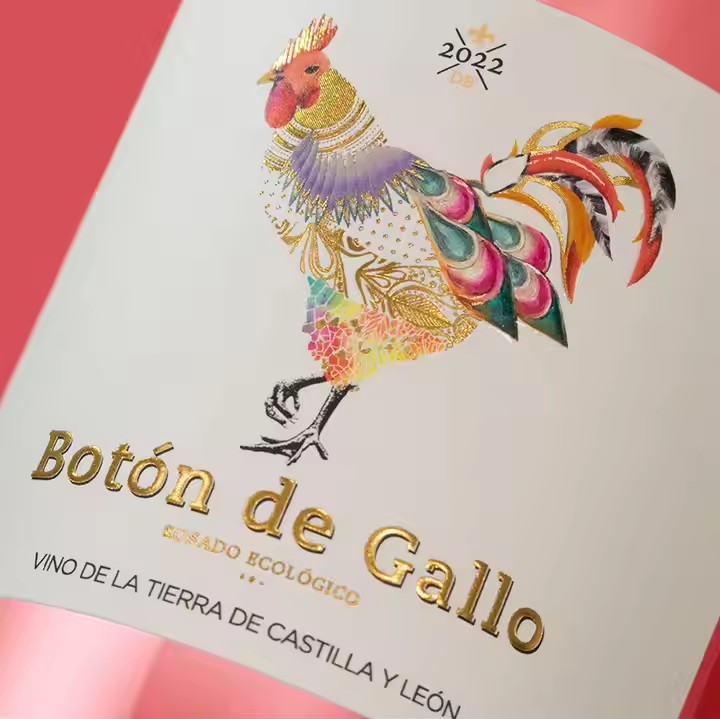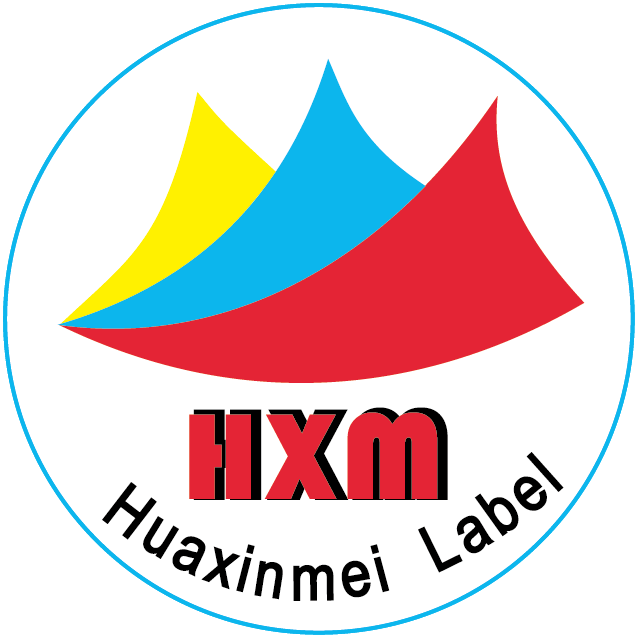Material Selection
Substrate Material: Select materials with good waterproof performance by themselves, such as plastic films like polyester (PET), polypropylene (PP), and polyvinyl chloride (PVC). These materials have a high density and low water absorption, which can effectively block water penetration. Among them, PET film has high strength, good transparency, and relatively excellent waterproof performance; PP film has good flexibility and chemical resistance, and is also suitable for waterproof labels. The selection of the substrate material itself determines the waterproof property of the waterproof label. Different materials will present different effects. Also, pay attention to the style of the company’s products. Since different company brands focus on different aspects, waterproof labels with different textures should be used.
Ink: Use waterproof ink for printing. Common waterproof inks include solvent-based inks, UV inks, etc. Solvent-based inks have good adhesion and water resistance, and can form a strong ink film on the surface of the label; UV inks cure rapidly under ultraviolet light irradiation, and the formed ink layer has high hardness and waterproof performance. Moreover, the curing speed is fast, and the production efficiency is high. When using ink, choose inks with good printability, because inks of different prices have different performances. For example, for waterproof labels printed on car logos and outdoor advertisements, high-strength inks should be used as much as possible. Since these labels need to be exposed to the sun for a long time, inks that are not easy to fade are required.

Adhesive: Select adhesives with good waterproof performance to stick the labels. For example, acrylate adhesives, silicone adhesives, etc. Acrylate adhesives have good adhesion to a variety of materials and have a certain degree of water resistance; silicone adhesives have excellent weather resistance and waterproof performance, and can maintain a good bonding effect in a humid environment.
Structural Design
Multi-layer Structure: Design labels with a multi-layer structure to increase the waterproof barrier. Generally, it includes a surface protective layer, a printing layer, a substrate layer, and an adhesive layer. The surface protective layer can be a transparent waterproof film or coating, such as a polytetrafluoroethylene (PTFE) coating, which can effectively prevent water from contacting the printing layer and the substrate; the printing layer uses waterproof ink to print patterns and texts; the substrate layer selects waterproof plastic films; the adhesive layer uses waterproof adhesive to stick the label to the surface of the object.

Sealed Edges: Seal the edges of the label to prevent water from penetrating from the edges. Methods such as heat sealing, cold sealing, or coating with a sealant can be used. Heat sealing is to make the materials at the edges of the label melt and bond together by heating to form a sealed edge; cold sealing is to use a special cold-sealing adhesive to seal the edges at room temperature; coating with a sealant is to apply a layer of waterproof sealant, such as polyurethane sealant, on the edges of the label to form a sealing barrier.
Surface Treatment
Coating Treatment: Coat a waterproof coating on the surface of the label, such as polyvinylidene fluoride (PVDF) coating, silicone coating, etc. These coatings have extremely low surface energy and good waterproof performance, which can make water form droplets and roll off on the surface of the label, reducing the adhesion and penetration of water on the label surface. The thickness of the coating is generally between a few microns and dozens of microns, which can be adjusted according to actual needs.
Hydrophobization Treatment: Use chemical methods to hydrophobize the surface of the label to make the surface hydrophobic. For example, introduce hydrophobic groups such as fluoroalkyl groups and silyl groups on the surface of the label through technologies such as plasma treatment and chemical vapor deposition, thereby improving the waterproof performance of the label surface. After hydrophobization treatment, the water contact angle of the label surface can reach more than 100°, effectively preventing water penetration.
Manufacturing Process
Printing Process: Select an appropriate printing process to ensure a good combination of the ink and the substrate and improve the waterproof performance of the ink. For example, use gravure printing or flexographic printing. These two printing methods can make the ink form a relatively thick ink layer on the substrate, and the ink transfer effect is good, and the adhesion to the substrate is strong. During the printing process, strictly control the printing parameters, such as the drying temperature and drying time of the ink, to ensure that the ink is fully dried and cured, and improve the waterproof performance.
Lamination Process: For labels with a multi-layer structure, use the lamination process to firmly bond the various layers of materials together. Common lamination methods include dry lamination, wet lamination, and extrusion lamination, etc. Dry lamination is to coat the adhesive on one layer of material, and then laminate it with another layer of material after drying; wet lamination is to laminate two layers of materials together when the adhesive is not dry, and then dry it; extrusion lamination is to extrude a thermoplastic resin into a film through an extruder and then laminate it with other materials. No matter which lamination process is used, it is necessary to ensure a firm bond between the layers to prevent water from penetrating between the layers.

Quality Inspection: Strengthen quality inspection during the manufacturing process, and promptly detect and deal with labels that do not meet the waterproof performance standards. Methods such as visual inspection, water immersion test, and water resistance test can be used to detect the waterproof performance of the labels. Visual inspection mainly observes whether there are defects such as bubbles, cracks, and lack of adhesive on the surface of the label; the water immersion test is to soak the label in water for a certain period of time and observe whether there is water penetration; the water resistance test is to simulate the actual use environment and conduct a long-term water resistance test on the label, such as sticking the label to the surface of an object, and detecting whether the adhesive force and waterproof performance of the label decrease after multiple water washes or long-term exposure to a humid environment.


